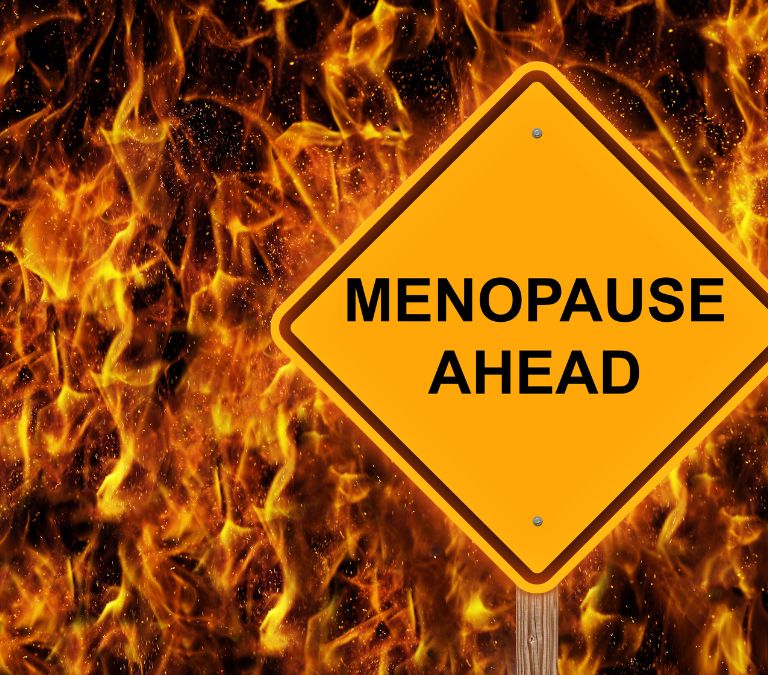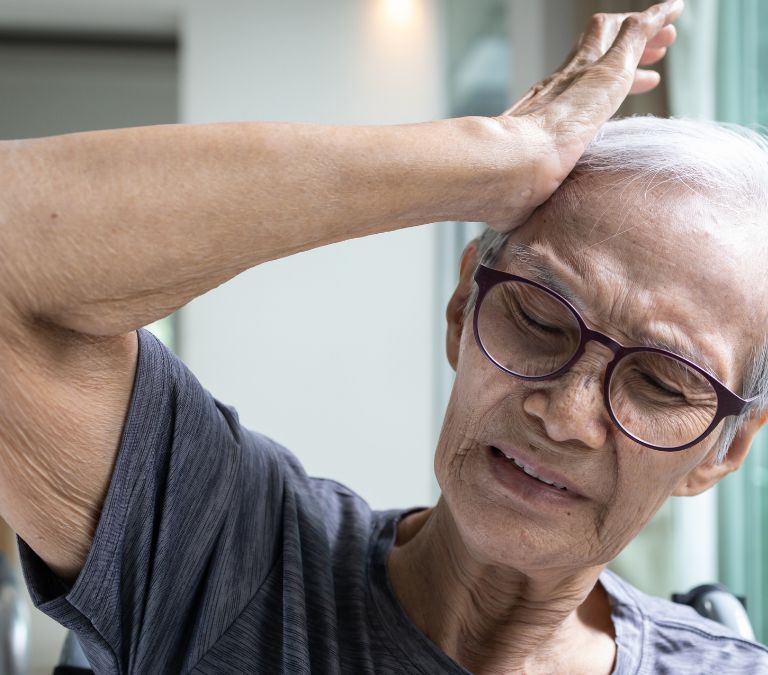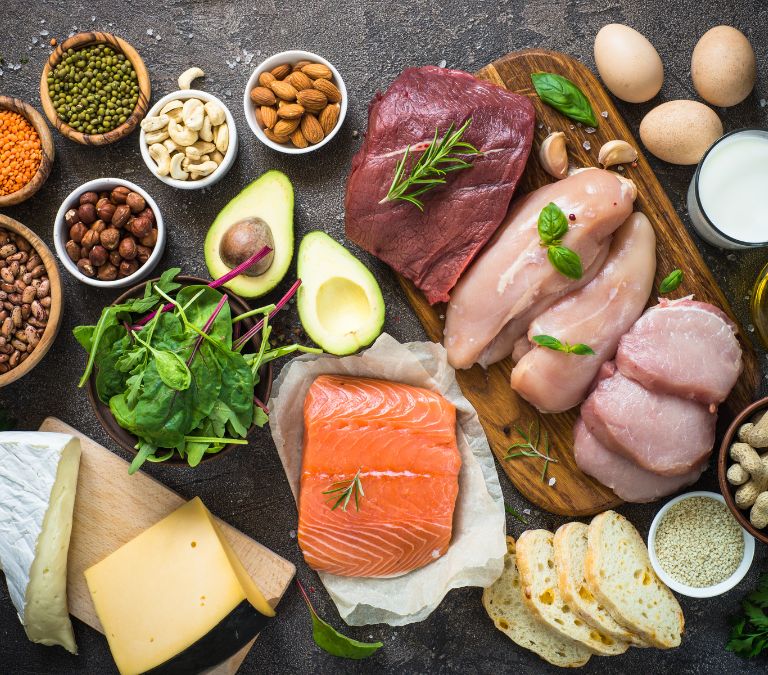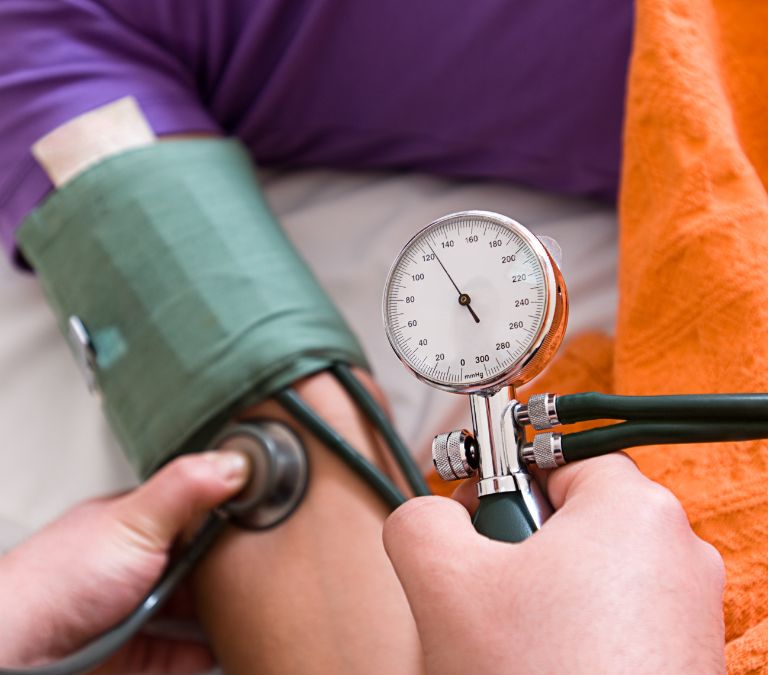Millions of people worldwide suffer from hypertension, one of the most common chronic disorders for men and women over 50. It is the most prevalent risk factor for developing heart disease. The number of women who suffer from hypertension significantly rises in postmenopausal age.
There are a lot of mechanisms that affect this, from oxidative stress to loss of estrogen and sympathetic activation. Also, postmenopausal high blood pressure can be considered a disorder or a part of the metabolic syndrome most women experience in their early postmenopausal days. This piece shall discuss all you need to know about high blood pressure in menopausal women.
Menopause: An Overview

Menopause ends a woman’s reproductive years and monthly menstrual cycles. The term also describes the changes women undergo before or after they stop having their menstrual period.
Between the age of 45-55, women naturally experience menopause as their ovaries stop releasing eggs, thereby ending the monthly blood flow. However, premature menopause can occur before age 40 when the ovaries are removed or damaged through surgery.
There are three stages of menopause. They are perimenopause, menopause, and postmenopause.
Perimenopause starts 1 or 2 years before menopause when the body produces less estrogen. A woman starts to experience symptoms like sore breasts, irregular periods, vaginal dryness, dry skin, racing heart, headaches, e.t.c. The second stage, menopause, is when you’ve spent a year without seeing your menstrual cycle.
The last stage is post menopause which refers to years after menopause. The symptoms would have lessened at this stage, but health conditions caused by lack of estrogen, like postmenopausal hypertension, heart diseases, body wrinkles, osteoporosis, and others, may persist.
High Blood Pressure: An Overview
High blood pressure, also referred to as hypertension, is a condition that occurs when there’s a high rush of blood against the artery wall for an extended period leading to health problems, especially cardiovascular conditions.
Long-term high blood pressure exposes you to health complications like heart attack and stroke. Luckily, the condition can be detected and treated before it becomes severe.
The problem, however, is that you can have high blood pressure for several years without knowing it, even if your blood pressure has reached risky levels. In a few cases, patients suffer from headaches and nosebleeds, though these symptoms aren’t distinct from hypertension.
High blood pressure is categorized into two types. The most common is primary hypertension which isn’t caused by underlying conditions. Rather it develops as a person ages. The second type is secondary hypertension caused by underlying medical conditions like kidney disorders, thyroid diseases, sleep apnea, e.t.c. It appears abruptly and causes a spike in blood pressure more than that of primary hypertension.
There are a lot of high blood pressure risk factors, including age, obesity, family history, intake of too much sodium, deficiency in potassium, e.t.c.
Chronic high blood pressure can damage your visceral organs. The longer hypertension is left untreated, the more damage it causes. Some of the complications caused by high blood pressure include; Stroke, cardiovascular diseases, weakened kidney blood vessels, narrowed eye blood vessels, and dementia, among others.
What are the causes and risk factors of the condition? Read on to find out.
Hypertension and Menopause: What’s the Connection?

According to the American Heart Association, more than 50 percent of the victims of hypertension are women. This report contradicts the public belief that men are more prone to the condition.
Women’s blood pressure increases as they age, and they’re likely to experience menopause by age 40. There is no doubt a link exists between increased blood pressure and menopausal symptoms. Throughout the three stages of menopause, women experience changes in their blood pressure.
At perimenopause, when a woman’s body begins preparing to end her reproductive years, there’s an increased case of hypertension in women. However, a study shows that little research has been done on changes in women’s blood pressure during the perimenopause stage.
Research has shown a high increase in blood pressure in postmenopause, which increases the risk of developing heart disease by five times.
Also, in 2020, a study reported that premature menopause increases the risk of hypertension. For this reason, the study recommended that people take extra care in monitoring their blood pressure.
What Causes Changes in Blood Pressure at these Stages?
There must be a force behind the changes that occur in blood pressure during and after menopause.
During menopause, estrogen levels are greatly reduced in women. The hormone has a lot of effects on our blood pressure.
Estrogen has vasodilatory effects that help in keeping blood pressure low. That means the blood vessels are wide enough to support blood flow without restrictions. It also lowers blood cholesterol levels. Like high blood pressure, too much cholesterol can clog up the artery walls and cause heart diseases.
The hormone also reduces inflammation and increases nitrous oxide levels – a chemical that helps widen and relax blood vessels.
These estrogen effects are why there’s less prevalence of high blood pressure in women before menopause. Women are exposed to high blood pressure when this hormone ceases to be produced.
Studies have proved that women increase weight at the age of menopause. Being overweight is considered one of the leading causes of high blood pressure.
Many other factors cause high blood pressure during menopause. The factors are discussed in the causes of hypertension section.
Symptoms of High Blood Pressure in Menopausal Women

High blood pressure generally doesn’t have specific symptoms. That’s why it’s sometimes referred to as the “silent killer” because most people live with the condition without knowing it.
Mostly, symptoms appear when a person has spent years with the condition, and it has become severe. In some cases, even these people don’t experience any symptoms.
However, certain symptoms signal how high blood pressure breaks blood vessels. They include the following.
- Dizziness
- Skin flushing
- Red spots in the eye
In some cases, patients may experience:
- Severe headache
- Nosebleeds
- Anxiety
- Fast pulsations on the neck
- Shortness of breath
- Palpitations
- Chest Discomfort
- Fatigue
Research has recently shown that many middle-aged women live with tension because symptoms like chest discomfort, headache, low quality sleep, and palpitations are associated with menopause.
According to a paper published by a group of experts in the European Heart Journal, missed high blood pressure cases are among the main problem of overlooked cardiovascular conditions in women of menopause age. The paper reported that these women are left undiagnosed of high blood pressure and other cardiovascular ailments because their health care providers mostly focus on more common symptoms in men than women.
One of the paper’s authors, Angela Mass, MD, Ph.D., said this confusion occurs because men and women have different patterns of coronary artery aging, and the differences start around menopause.
“Stenosis, or narrowing of the large arteries, typically doesn’t develop in women until about a decade later than in men and is unlikely to be present in women in their forties and fifties who are going through menopause; when cardiologists look for stenosis in middle-aged women and don’t find it, they may be too quick to conclude that women are experiencing symptoms of menopause — and not symptoms of hypertension or other risk factors for cardiovascular disease” explained Dr. Angela Mass.
She explained that the first signs of cardiac conditions in women start around menopause and include narrowing and damaging blood vessels and spasms.
Causes of High Blood Pressure in Menopausal Women
Generally, the causes of hypertension are unknown. Mostly, the condition arises as a result of underlying medical conditions.
However, some cases of hypertension are not caused by any underlying medical condition. Menopausal high blood pressure is a secondary form of hypertension caused by certain changes women experience during menopause.
Here are some of the causes of hypertension in menopausal women:
Lack of Vasodilators:
During menopause, estrogen – a group of hormones concerned with reproductive and sexual development in women, is decreased. These hormones are produced mostly by the ovaries, while few are produced by the fat cells.
Estrogen doesn’t only help in normal sexual development and has an important role in controlling the level of blood pressure. At a young age, estrogen acts as vasodilators that help widen blood vessels to ensure normal blood flow. They also help produce chemicals that help relax the arteries, promoting blood flow.
When women reach the age of menopause, all the good works of estrogen end, leaving them exposed to high blood pressure.
Overweight
During perimenopause, women noticed an increased weight of about 5 to 10 pounds or even more. This weight gain result from decreased production of estrogen and energy expenditure.
Estrogen plays an important role in the distribution of fats in women’s bodies. Before menopause, the hormone deposits high fat in the hips, tights, and buttocks. When menopause comes, women will experience a drastic weight gain, especially in the mid part of the body.
This increase in weight results from the production of more visceral abdominal fats – a type of part produced by the visceral organs and has been linked to cardiovascular disease due to its activeness in metabolism.
When you become obese, your heart finds it difficult to pump blood to the other parts of the body, training your blood vessels and making them resistant to blood flow. Also, obesity strains the kidney and damages the tiny blood vessels there. These lead to elevation of the blood pressure.
Too Much Intake of Salt
Too much salt, which contains sodium, leads to water retention, which can elevate blood pressure.
Studies have shown that women become more sensitive to salt at menopause age. Therefore the salt you include in your diet greatly impacts your health after menopause.
Besides hypertension, too much salt causes dehydration and bloating in menopausal women. However, this doesn’t mean you should avoid salt when you reach menopause. Rather, you only need to reduce the amount you add to your diet or consider other alternatives.
Excessive Intake of Alcohol

Alcohol raises renin levels – a hormone that tightens the blood vessels. Renin also reduces the amount of fluid that’s released by the body. The blood pressure rises when the blood vessels are narrow, and there’s a lot of fluid in the body.
The North American Menopause Society advises that women should avoid excessive intake of alcohol at menopause as it increases their risk of certain diseases, including heart problems.
During menopause, it’s recommended that women take only 1 drink of alcohol daily. Consumption of two or more alcoholic drinks at menopause is considered excessive.
Smoking
Women who smoke usually experience severe menopause symptoms. Their hot flashes are more, and they also experience more insomnia than women that don’t smoke.
Each time you smoke, the blood pressure elevates temporarily and returns normally. Excessive smoking damages the arteries and narrows them, making the heart work harder to ensure proper blood flow.
Increased Levels of Cholesterol
The body produces two types of cholesterol – low-density and high-density cholesterol. When there are too many levels of low-density level cholesterol, the excess will deposit on the walls of blood vessels, which narrows them and prevents regular blood flow.
During menopause, when there’s a decrease in estrogen production, the LDL cholesterol levels rise significantly. Estrogen helps in the metabolism of cholesterol in the liver. When there’s a drop in the hormone level, much LDL cholesterol builds up in the body, exposing women to heart diseases.
Presence of too much of the waxy fat-like substance, the arteries become too stiff and narrow to support normal blood flow. It, in turn, leads to elevation of blood pressure.
Risk Factors for High Blood Pressure in Menopausal Women
There are a lot of factors that put menopausal women at higher risk of developing hypertension. The risk factors for high blood pressure in menopausal women are mostly the risk factors of hypertension in individuals of all ages. They include:
Diabetes
Menopausal high blood pressure is more likely to affect women that have diabetes than those that are not. Studies have shown that about ⅔ of diabetic adults also suffer from high blood pressure.
Diabetes deteriorates the blood vessels and exposes them to atherosclerosis – a condition that can lead to hypertension if left untreated. Chronic high blood pressure also worsens diabetic complications and kidney disorders.
Most women with diabetes will likely have high blood pressure and other heart conditions at menopausal age.
Unhealthy Diet
Another factor that exposes middle-aged women to hypertension is unhealthy diet practices. Intake of too much sodium elevates the blood pressure. Most of the sodium we intake is in table salt and processed food.
Women at the age of menopause become more sensitive to sodium. Frozen Pizzas, preserved foods, sandwiches, deli meat, and soups are foods that contain high levels of sugar.
Potassium helps keep fluid at normal levels in our cells and helps in the contraction of muscles. Low amounts of potassium in the blood can lead to hypertension. You can easily fight this deficiency by including potassium-rich foods in your diet.
Accumulating too many trans and saturated fats can also increase the risk of hypertension. These fats raise bad cholesterol levels and lower good cholesterol levels, narrowing the blood vessels.
Sedentary Lifestyle
Spending the whole day on the couch watching movies and TV shows increases the risk of developing high blood pressure during menopause. Women who engage in physical activities tend to have less risk of high blood pressure. The American Heart Association recommends everyone performs at least 30 minutes of exercise thrice a week.
Regular exercise reduces weight and makes the heart stronger to pump blood without difficulty. It reduces the pressure on blood vessels and the risks of high blood pressure.
Obesity
Obesity is when a person’s BMI is more than 30 as a result of having excess fat in the body. Women of menopausal age that are overweight are more likely to experience hypertension because their hearts have to work harder to ensure normal blood flow.
Too much weight is also linked to increased LDL (bad) cholesterol and decreased HDL (good) cholesterol which also causes high blood pressure.
Intake of Tobacco and Alcohol
Menopausal women who smoke tobacco and drink alcohol are more likely to develop hypertension than those that don’t. Tobacco contains nicotine, a substance that increases high blood pressure. Also, smoking gives off carbon monoxide, a deadly gas that, when inhaled, reduces oxygen levels in the blood.
On the other hand, alcohol produces renin, a chemical that disrupts normal blood flow, thereby increasing blood pressure.
Family History
Women with a family history of hypertension are more likely to suffer from high blood pressure at menopausal age. Studies have shown that genes have a role in high blood pressure and other cardiovascular conditions.
However, this risk of hereditary high blood pressure increases with poor lifestyle habits like eating an unhealthy diet, smoking tobacco, and excessive intake of alcohol.
Ethnicity or Race
Another risk factor for menopausal hypertension is race or ethnicity. Black women are at more risk of developing hypertension at menopause than whites, Hispanics, American Indians, and Asians.
Blacks are at more risk of developing hypertension early than other races due to certain factors.
What’s the ideal blood pressure reading?
Since high blood pressure doesn’t have specified symptoms, the only way to know whether you have the condition or not is by getting your blood pressure tested.
During a blood pressure check, two figures are considered – the systolic or top blood pressure and the diastolic or bottom blood pressure.
The two are very different!
What is systolic blood pressure?
When the heart beats, it wrings and pushes blood to the arteries, and from there, it travels to the other parts of the body. The heart’s pumping force creates pressure on the blood vessels, known as systolic blood pressure.
What is diastolic blood pressure?
In-between beats, the heart rests. During this rest, there’s a little pressure in the arteries, known as diastolic blood pressure. During this time, the heart gets filled with new blood and receives oxygen.
Which number is more important?
Generally, systolic blood pressure is given more importance due to its significance as a risk factor for heart disease. Systolic blood pressure rises as a person ages due to narrowing arteries, plaque deposits, and other cardiac issues.
However, health personnel uses both high systolic and high diastolic blood pressure to make a hypertension diagnosis.
The 5 Blood Pressure Categories
The American Heart Association recognized 5 blood pressure categories, they’re:
- Normal blood pressure: In this case, the blood pressure is below 120/80 mmHg. The blood pressure is considered normal and not at risk of heart disease. Continue a healthy lifestyle, a balanced diet, exercise, and avoid alcohol.
- Elevated blood pressure: The blood pressure reads between 120-129 systolic and less than 80 mm Hg diastolic. Individuals with blood pressure within this range are advised to take steps to control it as they’re likely to develop high blood pressure.
- Stage 1 hypertension: The blood pressure reading is 130-139 systolic and 80 diastolic mm Hg. This stage is considered high blood pressure, and doctors are likely to recommend lifestyle changes to patients or even prescribe blood pressure drugs as a person is at risk of developing a heart attack or stroke.
- Stage 2 hypertension: At this stage, the blood pressure consistently reads 140/90 mm Hg or more. Doctors usually recommend lifestyle changes and blood pressure medication at this stage.
- Hypertensive crisis: This is a critical stage that needs medical attention. At this stage, you may experience shortness of breath, difficulty in speaking, and blurred vision. When the blood pressure abruptly exceeds 180/120 mm Hg, you must wait for at least 5 minutes, then check again. If the blood pressure is still at that level, quickly contact your health care provider or call 911.
Menopausal Hormone Therapy (MHT)
As estrogen levels fall during menopause, women experience symptoms like vaginal dryness, frequent urination, insomnia, dry eyes, hot flashes, e.t.c. An effective way to eliminate these symptoms is to undergo menopausal hormone therapy (MHT), also known as Estrogen Replacement Therapy.
What is Menopausal Hormone Therapy?
Menopausal hormone therapy is the process of boosting estrogen levels to reduce menopause symptoms. Hormone therapy has benefits, side effects, and risks like any treatment. Consider talking to healthcare personnel before starting it.
Types of Menopausal Hormone Therapy
There are two general types of menopausal hormone therapy. They’re:
Estrogen Therapy
Estrogen therapy involves boosting estrogen levels alone and in low dosage. It is mostly given to women experiencing menopause symptoms after a hysterectomy. There are many forms in which you can take estrogen for hormonal therapy. There are:
- Estrogen pills are the most common form of estrogen in alleviating menopausal symptoms. Many brands produce different estrogen pills, usually taken once a day. However, some may have a complicated dosage schedule.
- Estrogen patches: another common way of adding estrogen to the body is using estrogen patches worn on the abdomen. Depending on the type and dosage, these patches are mostly replaced after a few days or weeks. It’s good to know that there are estrogen patches that don’t alleviate menopausal symptoms; they only reduce the risk of osteoporosis.
- Estrogen Topicals: These include oils, sprays, creams, and gels containing estrogen. These products are applied directly to the skin, and the estrogen is absorbed into the bloodstream. These products are applied once a day, but they usually have different specifics – while some are applied to the arm and wrist, others to the legs.
- Estrogen Vaginal: These come in the form of vaginal creams, tablets, and vaginal rings. They are mostly used by women experiencing vaginal dryness and itching. Women that find sexual intercourse hurting can also use them. Vaginal estrogen products have different dosing schedules and replacement times. Talk to your doctor about the best estrogen vaginal product you should use.
Estrogen/Progestin Hormone Therapy
This therapy involves a dosage of estrogen and a synthetic form of progesterone (progestin); it is regarded as a combination therapy. It is given to women who haven’t undergone a hysterectomy (those that still have their uterus)
The combination reduces the risk of endometrial cancer (cancer of the uterus lining), which can occur when you’re taking estrogen alone. Progestin also helps in relieving uncomfortable menopause symptoms.
There are generally two forms of estrogen/progestin hormone therapy:
- Progestin pills: These include natural and synthetic progesterone pills. Many health care providers are now leaning toward using natural progesterone rather than artificial.
- Intrauterine Progestin: These are intrauterine devices mostly used for birth control and stopping bleeding. If you undergo this therapy, your doctor will recommend you keep it until after Perimenopause as it helps with unstable menstrual cycles.
What are the benefits of Menopausal Hormone Therapy?
Hormone therapy has some benefits. It may:
- Help in relieving hot flashes,
- Reduce vaginal itchiness and dryness, which causes discomfort during sexual intercourse,
- Enhance sleep quality,
- Reduce the risk of bone thinness,
- Reduce the risk of developing heart diseases in some women,
- Reduce the risk of developing dementia,
- Reduce mood swings and night sweats,
- Reduce the risk of diabetes and colon cancer,
- Alleviate joint pain.
What are the risks of Menopausal Hormone Therapy?
Hormone replacement therapy assists many women in overcoming uncomfortable menopause symptoms. However, like any other treatment, it comes with some health risks. They include:
- Increased risk of cancer of the womb’s lining in women that haven’t undergone hysterectomy and are taking estrogen alone without progestin.
- Increased risk of developing gallbladder problems
- Exposure to stroke, blood clots, and breast cancer.
- Increased risk of developing dementia if done after mid ages.
What are the side effects of Menopausal Hormone Therapy?
Estrogen replacement therapy comes with some side effects. Though these side effects aren’t severe, you should contact your doctor once you start experiencing them. The side effects include:
- Tender breasts
- Irregular spots
- Frequent mood swings
- Bleeding
- Migraines/ headaches
- Bloating
- Nausea
- Discoloration of skin
- Skin discomfort (for those using patches)
- Retention of fluid.
Mostly, hormone therapy side effects are benign and tend to disappear a few days after they start. However, if they become severe, consider talking to your doctor to see if they’ll change your form or therapy or reduce the dosage. Avoid making changes to your hormone therapy without consulting your doctor.
Who should avoid Menopausal Hormone Therapy?
To avoid worsening underlying conditions, health care providers recommend you stay away from menopausal hormone therapy if:
- you’re a victim of endometrial or breast cancer
- experience abnormal bleeding
- have an increased risk of stroke and cardiovascular diseases
- have liver or gallbladder diseases
- you’re at risk of blood clots
- think or suspect you’re pregnant
How long should hormone therapy last?
There isn’t a generalized time limit to when menopausal therapy should stop. Take low doses of your therapy product and visit your doctor from time to time to re-evaluate the treatment and see if there’s a need to adjust anything.
If you start experiencing a health condition during therapy, ensure you talk to your doctor before continuing with your therapy.
Cost of Menopausal Hormone Therapy
The hormone therapy cost varies depending on your product and how long the therapy lasts. Tablets tend to cost less than patches and intrauterine devices. Generally, the cost ranges from $10 upwards.
Top 7 Natural Remedies To Control High Blood Pressure in Menopausal women

There are many natural ways to control menopausal high blood pressure without prescription medications. Let’s look at 7 natural ways you can effectively lower your blood pressure during menopause:
- Exercise Regularly
One of the most effective natural methods of lowering blood pressure is exercise. According to research, it lowers blood pressure by 8 numbers.
Regular physical activities help prevent elevated blood pressure from turning into hypertension. You should exercise for 30 minutes thrice or four times a week.
Exercise makes your heart strong enough to pump blood efficiently without pressurizing the arteries. There are a lot of aerobic exercises that can help you fight hypertension. They include cycling, jogging, swimming, walking, and dancing.
- Consume a Healthy Diet
Eating a balanced diet that consists of whole grains, vegetables, fruits, and low-fat dairy can lower blood pressure by a significant rate.
You can consider following the Dietary Approaches to Stop Hypertension (DASH) diet to curb high blood pressure. The diet includes:
- Consuming whole grains, veggies, fruits, lean meat and fish, low dairy products, and nuts.
- Cutting off the intake of food containing high amount of saturated fats
- Reducing the intake of desserts and sweetened drinks
- Reduce Sodium Intake
Many people consume high amounts of salt in processed and homemade foods. Too much salt increases the risk of high blood pressure and other cardiovascular conditions.
Reducing your salt intake plays a vital role in lowering blood pressure. The American Heart Association suggests restricting your sodium intake between 1,500 to 2,300 mg. A tablespoon of table salt contains 2300 mg of sodium; therefore, your food should contain less than a spoonful of salt.
Also, when buying processed foods, go for the ones with little sodium.
- Reduce Alcohol Intake
Reduction of alcohol intake helps reduce blood pressure by about 4 mg. One drink equals 1.5 ounces of liquor or 12 ounces of beer.
Taking too many alcoholic drinks increases blood pressure and temper with the effects of blood pressure medications.
- Reduce Chronic Stress
Excess stress exposes you to the risk of high blood pressure. When you’re in a stressed situation, your blood pressure temporarily elevates. Too much stress can keep your blood pressure high.
Though there isn’t enough research to explain how stress relieving techniques can lower blood pressure, it’s still recommended you figure out your causes of stress and try to avoid them. Practicing Yoga, good sleep patterns, and meditation are effective ways to relieve stress.
- Quit Smoking
Smoking cigarettes elevates blood pressure for a short period. If you’re a keen smoker, there’s a high chance that your blood pressure is always elevated, thus increasing the risk of hypertension.
Smokers with high blood pressure are more exposed to cardiovascular conditions like stroke and heart attack. When you avoid smoking, your blood pressure becomes normal, and your overall health improves.
- Get a Good Night’s Rest
Many women experience difficulty sleeping during menopause mostly because of hot flashes and night swears. Getting quality sleep can help reduce your blood pressure. A lot of factors make people find it hard to have a good night’s rest, including insomnia and sleep apnea.
To get a good night’s sleep, stick to a sleep routine, watch your diet and talk to your doctor if your case is severe.
7 Foods that will help you lower your blood pressure during menopause

As estrogen levels fall, you must be mindful of what to consume and what not to. This section shall discuss the 7 foods that can help lower menopausal high blood pressure and also relieve menopause symptoms;
- Fatty Fishes
Fatty fish contains many omega-3-fatty acids – a compound that is essential in improving heart health.
Omega-3-fats decrease inflammation and production of compounds that constrict blood vessels, thereby improving blood flow.
A study has shown that people with high omega-3-fats levels have lower blood pressure compared to those with low omega-3-fats in their blood. Fatty fish is also rich in vitamin D, an essential nutrient that helps elevate moods and bone health.
- Citrus Fruits
Citrus fruits like oranges, grapes, and lemon help in lowering blood pressure significantly. They contain many vitamins and compounds that keep the heart healthy and reduce the risk of high blood pressure and other heart diseases.
While studies have proved that intake of orange, lemon, and grapefruit can help reduce blood pressure, it has also been shown that grapefruit can interfere with blood pressure medications.
- Beans
Beans contain a lot of potassium, magnesium, and other nutrients that help in reducing high blood pressure.
Numerous research has shown that a bean diet significantly helps lower blood pressure in people with or without hypertension.
- Bananas
Bananas contain a lot of potassium, enabling them to lower blood pressure effectively.
Studies have shown that bananas help lessen the effects of sodium and reduce tension on the walls of arteries, thereby promoting regular blood flow.
A medium-sized banana contains more than 400 mg of potassium. If you’ve suffered from kidney disease, consider talking to your doctor before increasing your intake of bananas, as too much of it is harmful to the kidney.
- Watermelon
Watermelon contains a lot of citrullines, an amino acid that the body converts to arginine, which helps produce nitric oxide – a gas that widens the artery and encourages normal blood flow, lowering blood pressure.
- Green Vegetables
Green vegetables contain a lot of nitrates – a compound that helps manage blood pressure.
Research has shown that a daily intake of one cup of leafy vegetables decreases the risk of hypertension and other cardiovascular diseases. Green vegetables include spinach, kale, Arugula, Broccoli, collards, e.t.c.
- Berries
Berries have a lot of health benefits, including the ability to lower high blood pressure and reduce the risk of many cardiovascular diseases.
The fruits contain Anthocyanins – a compound that increases the level of nitric oxide in the blood and reduces the release of vessel constricting compounds. Including blueberries, blackberries, or strawberries can help you fight high blood pressure.
Wrap Up
A lot of women experience high blood pressure during menopause. However, you can control this condition effectively by adopting healthy lifestyle habits, eating the DASH diet, and avoiding alcohol.
Menopause comes with many symptoms that can be discomforting to women – from weight gain, hot flashes, dry and itchy vaginal to mood swings. These symptoms can be effectively relieved with hormonal therapy; however, care has to be taken as this treatment has many risks and side effects.







